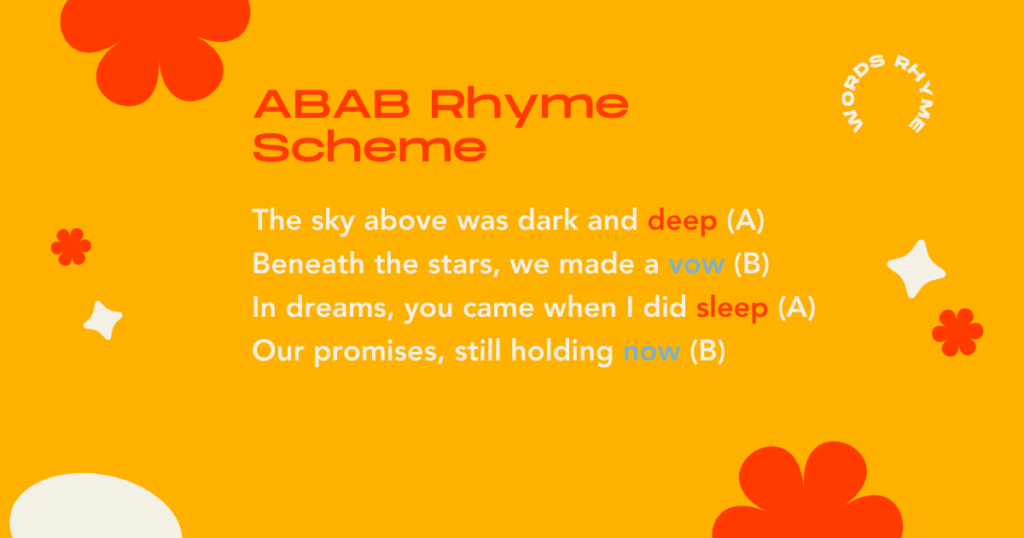This post will explore the ABAB rhyme scheme in depth, as well as provide detailed examples of this scheme.
Poetry is the dance of words and sounds together to create an enchanting melody. For thousands of years, different techniques have been used by poets to generate rhyme schemes that are outstanding and can bring out aesthetic appeal and musicality. In today’s exploration, we’ll look at one very famous rhyme scheme in poetry, ABAB.

Table of Contents
What is the ABAB Rhyme Scheme?
At its simplest explanation, ABAB is a poetic pattern where the ending words of every two consecutive lines rhyme with each other. To put it in another way, the first and the third lines contain the rhymes and would be labelled rhyme A while the second and the fourth lines would be labelled rhyme B.
Examples: A Glimpse into ABAB Beauty
A familiar ABAB poem to most people is “Pease Porridge Hot”:
“Pease porridge hot
Pease porridge cold
Pease porridge in the pot
Nine days old.”
In this poem, the words rhyme perfectly; however, this is not always the case. Sometimes a poem will have slant rhymes or imperfect rhymes. This is often when the words are similar but do not match perfectly.
One example of an ABAB poem that has a slant rhyme is “Then hate me when thou wilt” by Shakespeare.
Example: Then hate me when thou wilt
“Then hate me when thou wilt, if ever, now,
Now, while the world is bent my deeds to cross,
Join with the spite of fortune, make me bow,
And do not drop in for an afterloss.
Ah, do not, when my heart hath ’scaped this sorrow,
Come in the rearward of a conquered woe;
Give not a windy night a rainy morrow,
To linger out a purposed overthrow.
If thou wilt leave me, do not leave me last,
When other petty griefs have done their spite,
But in the onset come; so shall I taste
At first the very worst of fortune’s might;
And other strains of woe, which now seem woe,
Compared with loss of thee will not seem so.”
Key Takeaways
The ABAB rhyme scheme offers a delightful framework for creating melodic and visually appealing poetry, inviting readers into a beautiful journey of words and leaving an emotional imprint on their hearts and minds. We hope you’ve enjoyed the beauty of the ABAB rhyme scheme and hope it inspires you to create more harmonious poems full of emotions and images.


